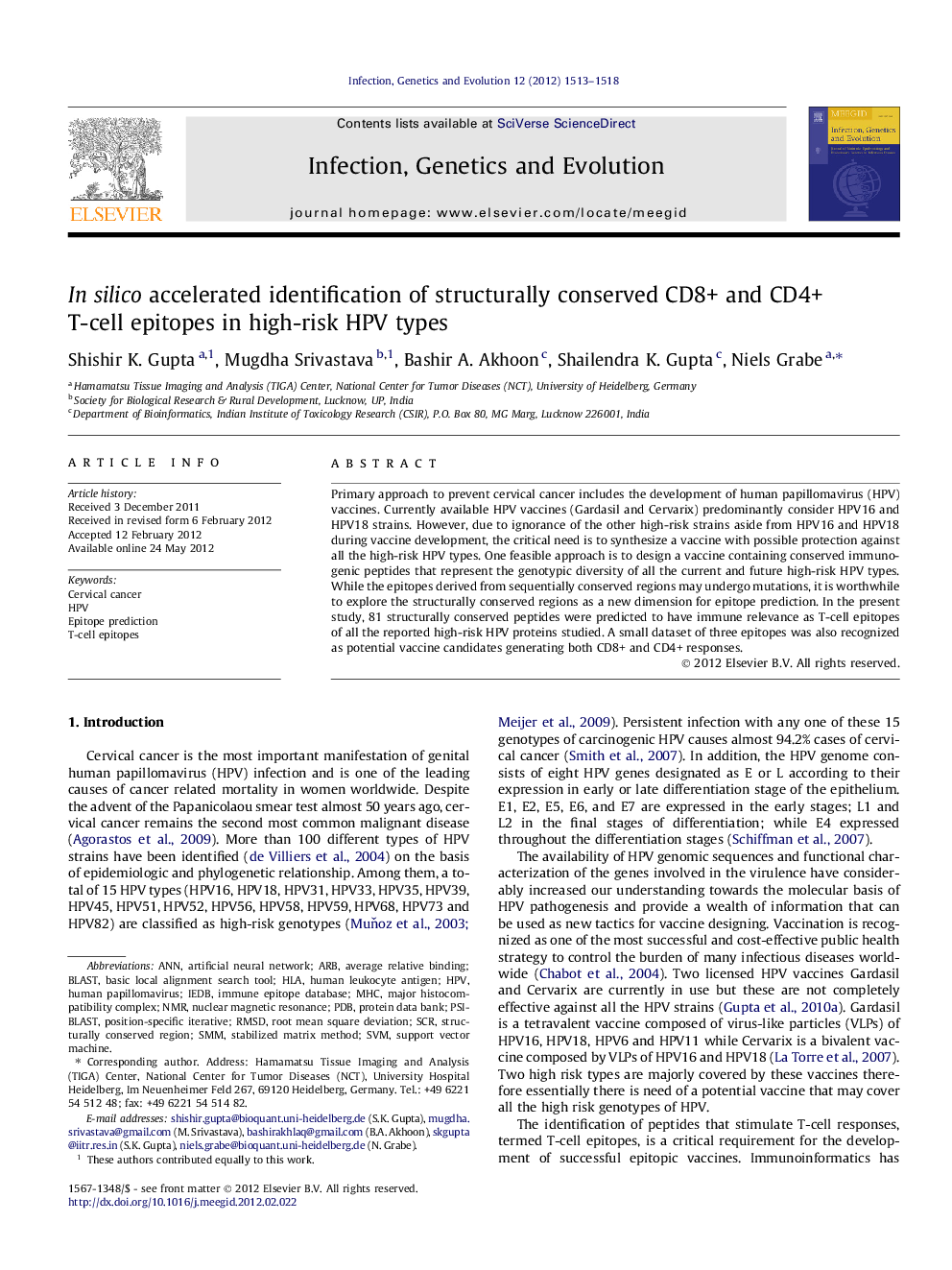| Article ID | Journal | Published Year | Pages | File Type |
|---|---|---|---|---|
| 5910845 | Infection, Genetics and Evolution | 2012 | 6 Pages |
Primary approach to prevent cervical cancer includes the development of human papillomavirus (HPV) vaccines. Currently available HPV vaccines (Gardasil and Cervarix) predominantly consider HPV16 and HPV18 strains. However, due to ignorance of the other high-risk strains aside from HPV16 and HPV18 during vaccine development, the critical need is to synthesize a vaccine with possible protection against all the high-risk HPV types. One feasible approach is to design a vaccine containing conserved immunogenic peptides that represent the genotypic diversity of all the current and future high-risk HPV types. While the epitopes derived from sequentially conserved regions may undergo mutations, it is worthwhile to explore the structurally conserved regions as a new dimension for epitope prediction. In the present study, 81 structurally conserved peptides were predicted to have immune relevance as T-cell epitopes of all the reported high-risk HPV proteins studied. A small dataset of three epitopes was also recognized as potential vaccine candidates generating both CD8+ and CD4+ responses.
⺠We proposed the identification of epitopes from structurally conserved regions as a new dimension for epitope prediction. ⺠We screened the HPV genome to identify potential highly conserved T-cell epitopes. ⺠We reported the epitopes ILYEDSLDI, LQFIFQLCK and YVTRTSIYY are capable of generating both CD8+ and CD4+ responses.
